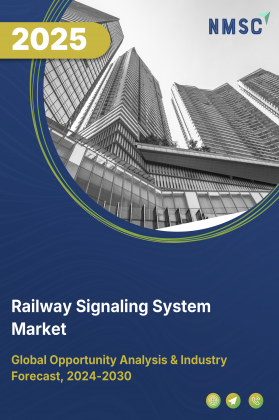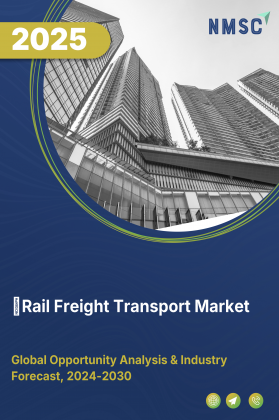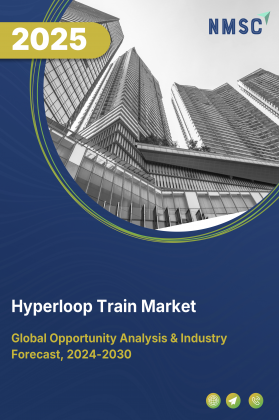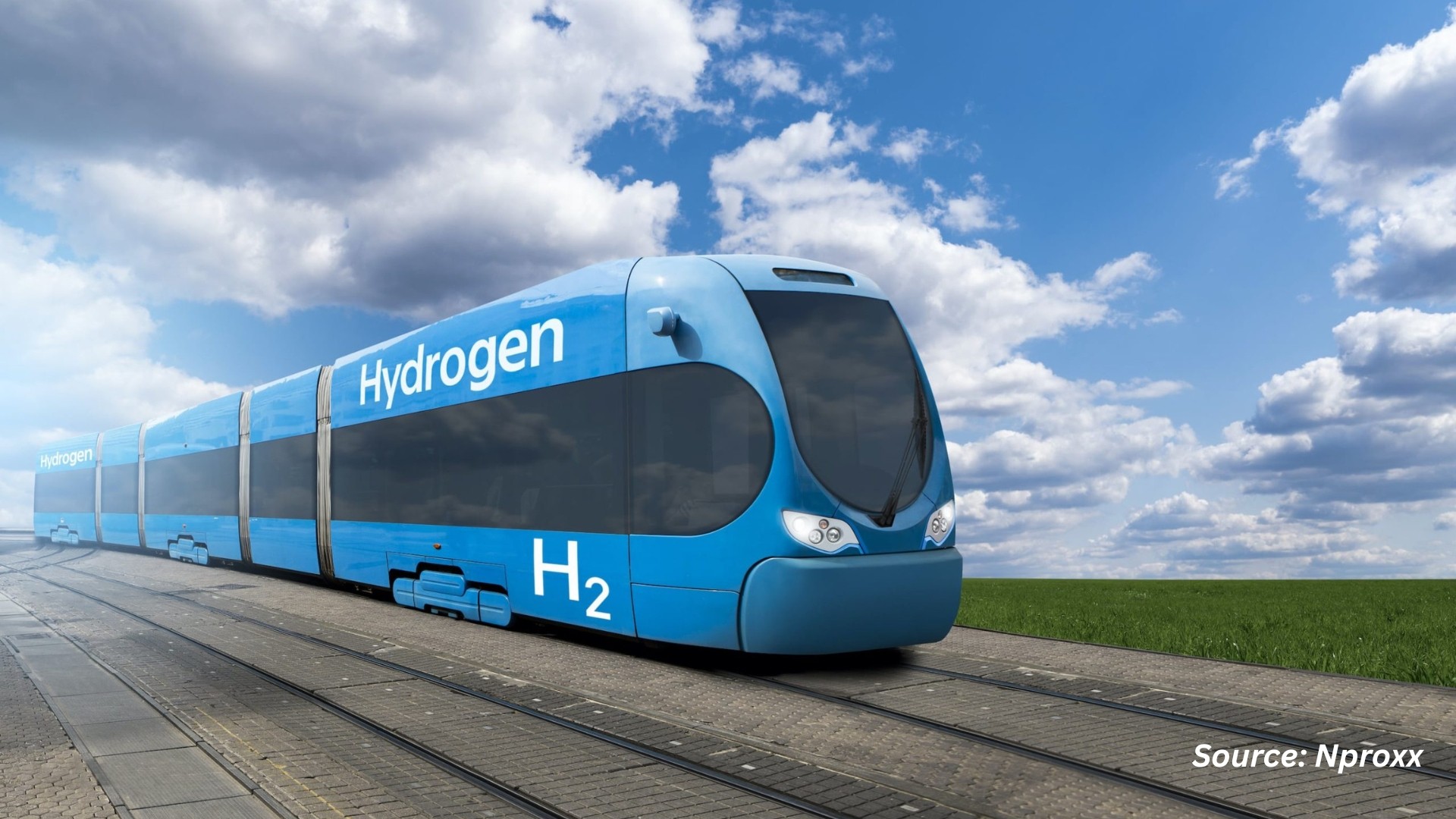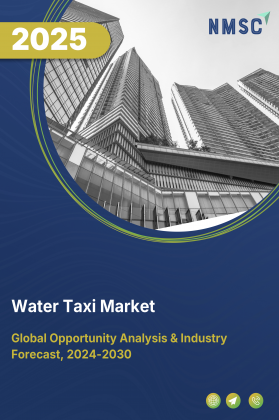
Water Taxi Market is segmented by Product (Ferries, Others), Propulsion Technology (Conventional Fuel), by Service Model (Scheduled, On-Demand, Leis), by Boat Size (Up to 10 m / <30 ft), by Passenger Capacity (Small – ≤12 passengers), by Ownership & Operation Model (Public Sector, Private Sector, Public-Private Partnerships), by Business Model (Scheduled Services), by Pricing Tier (Low-Cost, Mid-Price), and by End-User - Global Opportunity Analysis And Industry Forecast, 2025–2030
Industry Outlook
The global Water Taxi Market size was valued at USD 307.26 billion in 2024, with an estimation of USD 325.70 billion in 2025 and is predicted to reach USD 435.85 billion by 2030 with a CAGR of 6.0% from 2025-2030. The market is experiencing robust growth, driven by rising urbanization, worsening traffic congestion, and the increasing need for alternative transportation solutions.
Water taxis offer a practical and time-saving option by bypassing gridlocked roads, easing pressure on existing land-based infrastructure. Tourism is another major contributor to the market expansion, as travelers seek convenient and scenic modes of transport to access remote or waterfront destinations. The demand for water taxis is rising in regions with strong tourism activity and developed waterway networks.
Despite the market’s potential, growth is hindered by strict regulatory and safety compliance requirements. However, technological advancements, particularly in AI and real-time fleet management, are expected to enhance efficiency, reduce operational downtime, and improve service reliability. These innovations support the evolution of the market toward smarter and more responsive transportation networks.
Rise in Urbanization & Traffic Relief Fuels the Growth of the Market
Urban traffic congestion is a growing challenge in cities situated along rivers, lakes, or coastal zones, where high population density and limited road infrastructure frequently lead to bottlenecks. In response, many governments are adopting water taxis as a practical and effective mode of transport. These services provide an alternative route that bypasses gridlocked roads, reducing commute times and easing pressure on traditional transportation networks.
A recent example of this shift is seen in India, where a new water taxi service is set to connect South Mumbai with the upcoming Navi Mumbai International Airport. In a strategic move to strengthen intercity connectivity, commuters will soon be able to bypass long road journeys and cruise across the harbour from the iconic Radio Club jetty in Colaba. Jointly spearheaded by the City and Industrial Development Corporation (CIDCO) and the Maharashtra Ports Department, the initiative aims to drastically cut travel time between South Mumbai and the airport site marking a significant step forward in the city’s adoption of multimodal transport solutions.
Growing Tourism Activities Boost the Market Trends
The surge in global travel and tourism, particularly in regions with well-developed waterway networks, is significantly boosting the water taxi market demand. These vessels not only provide a practical means of reaching destinations that are difficult to access by road but also enhance the tourist experience by offering scenic and efficient transport.
According to the May 2025 UN Tourism Barometer, over 300 million international trips were recorded in the first quarter of 2025 surpassing both 2024 and pre-pandemic levels. This upward trend in tourism is directly contributing to the expansion of the market, as operators and local governments seek to improve transit options and capitalize on growing visitor flow.
Increasing Demand for Eco-Friendly and Sustainable Transportation Boosts Market Growth
With growing emphasis on reducing carbon footprints, the marine taxi market is rapidly embracing clean-energy technologies such as hydrogen fuel cells and electric propulsion to meet eco-conscious commuter expectations and optimize operational efficiency. In July 2024, San Francisco Bay Ferry’s MV Sea Change demonstrated the viability of zero-emission hydrogen power on a commercial passenger vessel, and in September 2024, Miami startup E-lixr launched a pilot electric-water-taxi service in Biscayne Bay. These fully battery-powered vessels not only eliminate local emissions but also help ease road congestion and pave the way for scalable, zero-emission water-taxi networks across coastal cities positioning services like FuturRide to lead the transition to greener urban mobility.
Stringent Regulatory Frameworks and Safety Compliance Requirements Restrain Market Expansion
The global water taxi market growth faces significant restraint due to stringent regulatory and safety standards imposed by maritime authorities and local governments. Compliance with international maritime safety regulations demands high initial investment in vessel design, equipment, and regular maintenance. Operators are required to meet strict certification protocols for both vessels and crew, resulting in longer approval cycles and increased operational costs.
Additionally, varying regulatory frameworks across countries create inconsistencies that hinder market expansion, especially for companies aiming to scale operations across multiple geographies. These challenges can deter new entrants and limit the pace of infrastructure development, particularly in developing regions.
AI-Driven Fleet Orchestration Creates Future Opportunity for the Market
By leveraging advanced machine learning and real-time sensor data such as weather and tide readings, passenger-load metrics, and navigational inputs water taxi operators can dynamically dispatch vessels to meet actual demand, dramatically reducing idle time and balancing energy use.
For instance, Buffalo Automation demonstrated a fully autonomous water taxi at Knoxville’s Volunteer Landing, where its AutoMate system fused data from LiDAR, cameras, radar, GPS, and environmental sensors to reroute around congestion hotspots and optimize docking schedules on the fly Knoxville Chamber. This pilot underscores the potential of AI-driven orchestration to elevate fleet efficiency, minimize downtime, and enhance passenger reliability—paving the way for smarter, self-managing water taxi services
Market Segmentations and Scope of the Study
The water taxi market report is segmented based on vessel type, propulsion technology, service model, boat size, passenger capacity, ownership and operation model, business model, pricing tier, and end-user application. Based on vessel type, the market is divided into ferries, cruise-type water taxis, yachts/private charters, sailboats, and others. Based on propulsion technology, it includes conventional fuel, electric/hybrid, and alternative fuels. Based on service model, the market is categorized into scheduled/fixed-route services, on-demand/point-to-point services, and leisure/hop-on-hop-off services. Based on boat size, it is segmented into up to 10 m (<30 ft), 10–15 m (30–50 ft), and over 15 m (>50 ft). Based on passenger capacity, the market includes small medium, and large vessels. Based on ownership and operation model, it is segmented into public sector (government-run, subsidized fares), private sector, and public-private partnerships (PPP). Based on business model, it comprises scheduled services (fixed timetables), on-demand/charter (dynamic pricing), and integrated mobility (linked with metro/bus systems). Based on pricing tier, the market is divided into low-cost, mid-price, premium, and dynamic pricing segments. Based on end-user application, it caters to public transportation, tourism and leisure, and private/corporate charters.
>Geographical Analysis
In North America, targeted public funding for green mobility infrastructure is driving rapid growth in the water taxi market share by making eco-friendly services financially feasible and operationally reliable. For example, the City of Pompano Beach officially launched a new water taxi route in December 2024 connecting Lighthouse Point to Hollywood with a USD 1.2 million grant from the Florida Department of Transportation and an USD 876,000 allocation from the American Rescue Plan Act, covering the bulk of startup costs and dock upgrades City of Pompano Beach.
This public–private partnership not only expands sustainable transit options for residents and visitors but has also added 11 stops along the Intracoastal Waterway, boosting local tourism and demonstrating how government subsidies can underpin the broader adoption of zero-emission marine taxis across U.S. coastal cities.
Europe’s stringent decarbonization policies are unlocking new opportunities for the water taxi sector. The EU’s Fit for 55 initiative and the upcoming Alternative Fuels Infrastructure Regulation (AFIR) compel all major ports to accommodate zero-emission vessels, prompting cities to equip jetties with electric charging points and hydrogen refueling stations.
Meanwhile, national funding schemes such as Germany’s USD 1.43 billion “Clean Maritime Europe” program reduce the financial risk of adopting electric and hydrogen water taxis by subsidizing boat purchases and dock modernizations. Together, these regulatory requirements and public investments are forging the foundation for a widespread shift toward clean, waterborne urban transit across European waterways
Asia-Pacific has emerged as the fastest-growing region in the market, fueled by major infrastructure investments that enhance both accessibility and operational efficiency on key waterways. A prime example is India’s June 2024 approval of the USD 9.14 billion, Vadhavan Port project on the western coast.
Slated to become one of the world’s largest deep-water ports, Vadhavan will offer state-of-the-art terminals and supporting road-rail links, laying the groundwork for a new marine hub. By upgrading port facilities and dredging deeper channels, regional planners aim not only to boost cargo throughput but also to encourage municipalities to introduce water taxi services leveraging these expanded harbors to provide eco-friendly, waterborne last-mile connections that relieve urban road congestion.
The Rest of World (RoW) market, including Latin America, the Middle East, and Africa, is witnessing steady growth as governments and urban developers seek sustainable transport solutions for coastal and inland waterways. In Latin America, countries such as Colombia and Chile are investing in waterborne transit to connect isolated communities and boost tourism.
Across Africa, nations like Nigeria and Kenya are adopting water taxi systems to alleviate road congestion and enhance access in waterfront regions. In the Middle East, countries including the UAE are incorporating electric and hybrid ferries into their smart city plans, aligning with green mobility goals. Across these diverse regions, there is increasing reliance on a blend of traditional vessels and modern technologies, with strong momentum toward low-emission solutions fueled by climate commitments and infrastructure development programs.
Strategic Innovations Adopted by Key Players
Key players in the water taxi industry are accelerating growth through zero-emission vessel innovations, strategic international funding, and forward-looking fleet partnerships.
-
In February 2025, Austal Australasia secured a USD 177–184 million agreements with Sweden’s Gotlandsbolaget to design and build a 130-metre, hydrogen-ready high‑speed vehicle-passenger catamaran. With capacity for 1,500 passengers and 400 vehicles, this vessel is part of decarbonizing transit and future passenger ferry services.
-
In November 2024, Candela raised USD 40 million in Series C funding (including a USD 14 million round), with Groupe Beneteau as a key investor, aimed at scaling production of its P‑12 electric hydrofoil ferry.
-
In October 2024, Artemis Technologies unveiled the Artemis EF‑12 Escape, a fully electric luxury hydrofoil water‑taxi seating up to 12 passengers, offering zero emissions, fast charging, and minimal wake, available for order globally.
-
In July 2024, Artemis signed a partnership with UrbanLink Air Mobility, whereby UrbanLink committed to purchase 20 Artemis EF‑12 Escape craft for deployment in Florida, California, and the Caribbean, with an option to later operate the larger EF‑24 passenger ferry (launch planned Q1 2026).
Key Benefits
-
The report provides quantitative analysis and estimations of the market from 2025 to 2030, which assists in identifying the prevailing industry opportunities.
-
The study comprises a deep-dive analysis of current and future water taxi market trends to depict prevalent investment pockets in the sector.
-
Information related to key drivers, restraints, and opportunities and their impact on the industry is provided in the report.
-
Competitive analysis of the players, along with their market share is provided in the report.
-
SWOT analysis and Porters Five Forces model is elaborated in the study.
-
Value chain analysis in the market study provides a clear picture of roles of stakeholders.
Water Taxi Market Key Segments
By Product / Vessel Type
-
Ferries
-
Cruise-Type Water Taxis
-
Yachts / Private Charters
-
Sailboats
-
Others
By Propulsion Technology
-
Conventional Fuel
-
Diesel-powered
-
Gasoline-powered
-
-
Electric / Hybrid
-
Battery-electric
-
Hybrid (Diesel + Electric)
-
-
Alternative Fuels
-
Hydrogen fuel cell
-
LNG (Liquefied Natural Gas)
-
By Service Model
-
Scheduled / Fixed-Route
-
On-Demand / Point-to-Point
-
Leisure / Hop-On-Hop-Off
By Boat Size
-
Up to - 10 m / <30 ft
-
10–15 m / 30–50 ft
-
Over - 15 m / >50 ft
By Passenger Capacity
-
Small (≤12 passengers)
-
Medium (13–50 passengers)
-
Large (51+ passengers)
By Ownership & Operation Model
-
Public Sector
-
Government-run
-
Subsidized fares
-
-
Private Sector
-
Public-Private Partnerships (PPP)
By Business Model
-
Scheduled Services (Fixed timetables)
-
On-Demand / Charter (Dynamic pricing)
-
Integrated Mobility (Linked with metro/bus systems)
By Pricing Tier
-
Low-Cost
-
Mid-Price
-
Premium
-
Dynamic Pricing
By End-User / Application
-
Public Transportation
-
Tourism & Leisure
-
Private/Corporate Charters
By Region
-
North America
-
The U.S.
-
Canada
-
Mexico
-
-
Europe
-
The U.K.
-
Germany
-
France
-
Italy
-
Spain
-
Denmark
-
Netherlands
-
Finland
-
Sweden
-
Norway
-
Russia
-
Rest of Europe
-
-
Asia-Pacific
-
China
-
Japan
-
India
-
South Korea
-
Australia
-
Indonesia
-
Singapore
-
Taiwan
-
Thailand
-
Rest of Asia-Pacific
-
-
RoW
-
Latin America
-
Middle East
-
Africa
-
Key Players
-
Alumaxboats.nl
-
Munson Boats
-
Metal Shark Boats
-
Streamline Fibreglass
-
Qingdao Bestyear Hardware & Machinery Co., Ltd.
-
Shandong Seaking Boat Technology Co., Ltd.
-
World Water Taxis
-
Seaboats
-
Fassmer
-
ARES SHIPYARD INC.
-
Candela
-
Artemis Technologies
-
Navier
REPORT SCOPE AND SEGMENTATION:
|
Parameters |
Details |
|
Market Size in 2025 |
USD 325.70 billion |
|
Revenue Forecast in 2030 |
USD 435.85 billion |
|
Growth Rate |
CAGR of 6.0% from 2025 to 2030 |
|
Analysis Period |
2024–2030 |
|
Base Year Considered |
2024 |
|
Forecast Period |
2025–2030 |
|
Market Size Estimation |
Billion (USD) |
|
Growth Factors |
|
|
Countries Covered |
28 |
|
Companies Profiled |
15 |
|
Market Share |
Available for 10 companies |
|
Customization Scope |
Free customization (equivalent to up to 80 working hours of analysts) after purchase. Addition or alteration to country, regional, and segment scope. |
|
Pricing and Purchase Options |
Avail customized purchase options to meet your exact research needs. |

















 Speak to Our Analyst
Speak to Our Analyst



